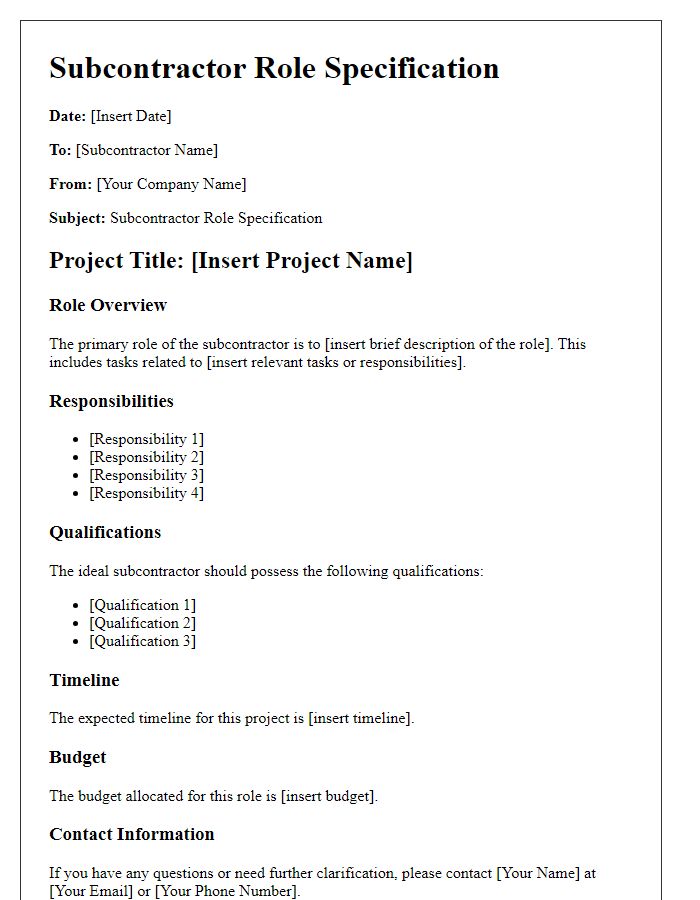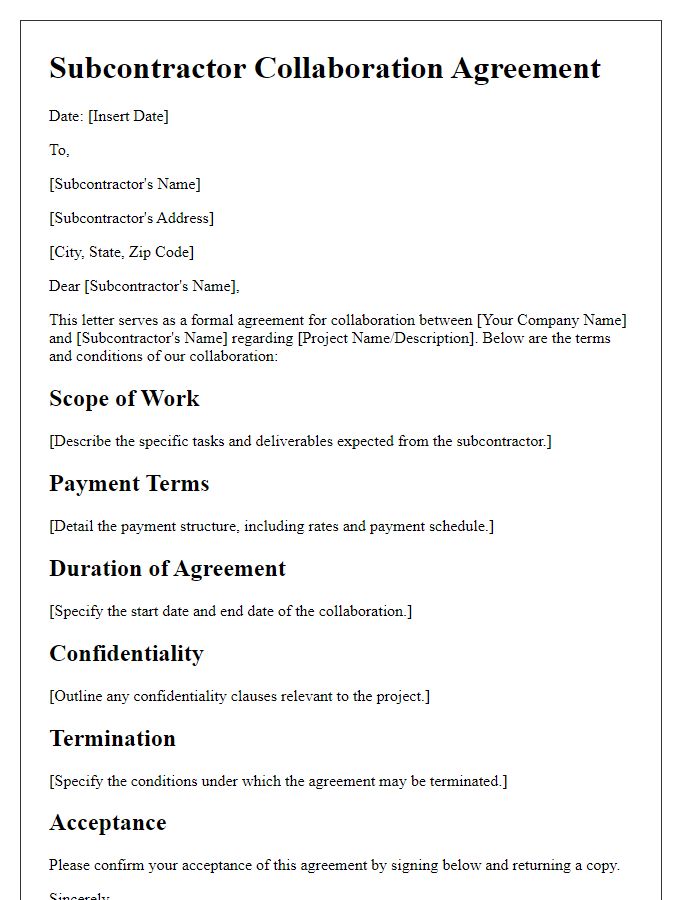Are you in the process of appointing a subcontractor for your project? It's crucial to communicate the details clearly and professionally to set the right tone for your collaboration. In this article, we'll guide you through crafting a well-structured subcontractor appointment letter that not only covers the essentials but also fosters a positive working relationship. Ready to dive into the details? Let's explore further!

Clear Identification of Parties
A subcontractor appointment letter clearly identifies two key parties involved in the agreement: the principal contractor and the subcontractor. The principal contractor, responsible for the overall project management, is typically a general contractor operating under a registered business name within a specified jurisdiction, such as the state of California. The subcontractor, often a specialized company or individual employed to perform specific tasks, should include detailed information such as a registered business name, contact information, and a unique identification number or tax identification number. This identification ensures accountability and legal recognition of both parties in the execution of services stipulated within the project scope.
Detailed Scope of Work
Subcontractor appointment letters outline the specific tasks and responsibilities assigned to subcontractors in various projects. These letters typically include essential details such as contract duration, project milestones, payment schedules, and specific performance standards. Clearly defined work scope can vary based on trade, such as electrical work for wiring installations or plumbing tasks for drainage systems. Essential project locations, like construction sites in urban areas (e.g., downtown Los Angeles), could also be highlighted. Compliance standards referenced may include OSHA regulations for safety practices or specific building codes applicable to the area. Additionally, communication protocols regarding project updates and changes can significantly impact efficiency and ensure alignment with the primary contractor's objectives.
Terms and Conditions
The subcontractor appointment letter formally establishes a business relationship between the primary contractor and the subcontractor, outlining specific terms and conditions. Essential information includes the project name, location, budgetary constraints, and timelines. Key terms outline scope of work, payment schedules, and deliverables. Compliance with local regulations, safety standards, and quality assurance processes is mandatory. Confidentiality agreements protect proprietary information throughout the project's duration. Dispute resolution mechanisms are outlined, detailing procedures for mediation and arbitration should disagreements arise. Lastly, termination clauses specify grounds for contract termination, ensuring both parties understand their rights and responsibilities.
Payment Details and Schedule
The subcontractor appointment letter outlines critical aspects such as payment details and schedule, ensuring clarity in financial obligations and timelines. Detailed payment terms specify total project cost, outlining milestone payments based on completion percentages--typically in increments of 25%--and due upon invoice submission. The payment method, often wire transfer or check, should also be documented to streamline transactions. Scheduling aspects include the start and completion dates, which are usually set within a three to six-month timeframe, depending on project scale. Additionally, definitive terms around late payment penalties, such as a percentage fee for overdue payments after a 30-day grace period, provide clear expectations for both parties. Furthermore, stipulated time frames for payment processing promote transparency and foster a cooperative working relationship throughout the project duration.
Termination Clause
The termination clause in a subcontractor appointment letter outlines the specific conditions under which either party may terminate the agreement. This clause typically includes the required notice period, such as 30 days written notice, and the grounds for termination, including breach of contract, failure to meet deadlines, or non-compliance with project specifications. It may detail the process for resolving disputes leading to termination. Additionally, any obligations related to final payments and the return of materials must be included. This ensures a clear understanding of both parties' rights and responsibilities in the event of contract termination.













Comments